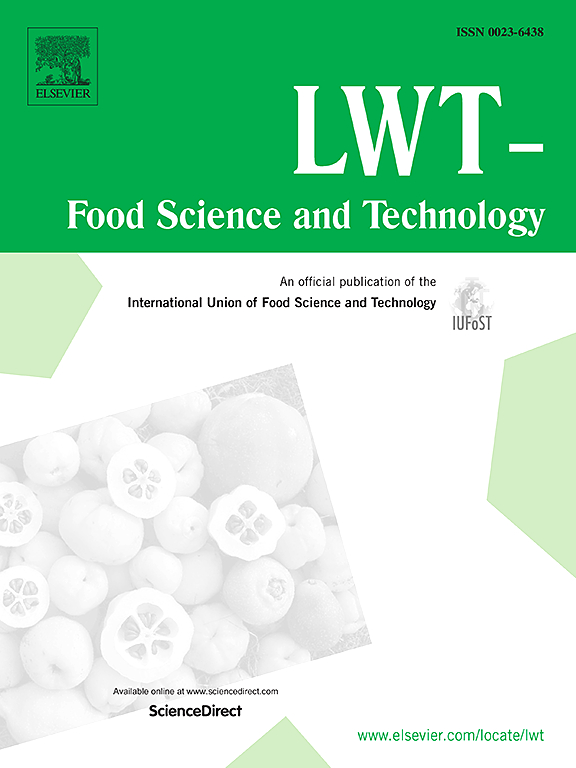Extraction and enrichment of anthocyanins from Cerasus humilis and the inhibition on low density lipoprotein oxidation by cyanidin-3-O-glucoside
IF 6
1区 农林科学
Q1 FOOD SCIENCE & TECHNOLOGY
引用次数: 0
Abstract
The extraction technologies and functional activities of anthocyanins have received increasing attention recently. Cerasus humilis (Bge.) Sok. anthocyanins (CHA) were extracted using natural deep eutectic solvents (NADES) combined with a probe-type ultrasound-assisted technique. Choline chloride-citric acid deep eutectic solvent was identified as the most suitable NADES for extracting CHA. Under optimal extraction conditions, the yield of CHA reached 66.1 ± 0.2 mg/100 g dry weight (p < 0.05). To enhance the purity of CHA, XDA-7 resin was used for enrichment due to its favorable adsorption/desorption capacity and recovery efficiency (92.0 %, 75.4 %, and 69.4 %, respectively). The adsorption behavior of XDA-7 resin on CHA was well described by the Langmuir model, indicating a potential monolayer adsorption mechanism. Cyanidin-3-O-glucoside (C3G) was identified as the most abundant component in enriched CHA by LC/MS2. The inhibition of C3G on low-density lipoprotein (LDL) oxidation was further investigated. The lag times of conjugated diene formation during LDL lipid peroxidation were evaluated using the four-parameter logistic regression model, which showed an extension of 9.09 %, 28.9 %, and 52.9 % in a concentration-dependent manner (R2 ≥ 0.985). Moreover, C3G also reduced the oxidative modification of apolipoprotein B100 (apoB100), the only protein component in LDL. Protein-ligand interaction studies between C3G and apoB100 indicated the formation of a ground-state complex primarily maintained by electrostatic interactions, suggesting that C3G may be transported by LDL to atherosclerotic plaques, potentially serving anti-atherogenic purposes. In conclusion, this study presents an efficient method for CHA extraction and highlights the potential of CHA in anti-atherogenic functions.
求助全文
约1分钟内获得全文
求助全文
来源期刊

LWT - Food Science and Technology
工程技术-食品科技
CiteScore
11.80
自引率
6.70%
发文量
1724
审稿时长
65 days
期刊介绍:
LWT - Food Science and Technology is an international journal that publishes innovative papers in the fields of food chemistry, biochemistry, microbiology, technology and nutrition. The work described should be innovative either in the approach or in the methods used. The significance of the results either for the science community or for the food industry must also be specified. Contributions written in English are welcomed in the form of review articles, short reviews, research papers, and research notes. Papers featuring animal trials and cell cultures are outside the scope of the journal and will not be considered for publication.
 求助内容:
求助内容: 应助结果提醒方式:
应助结果提醒方式:


